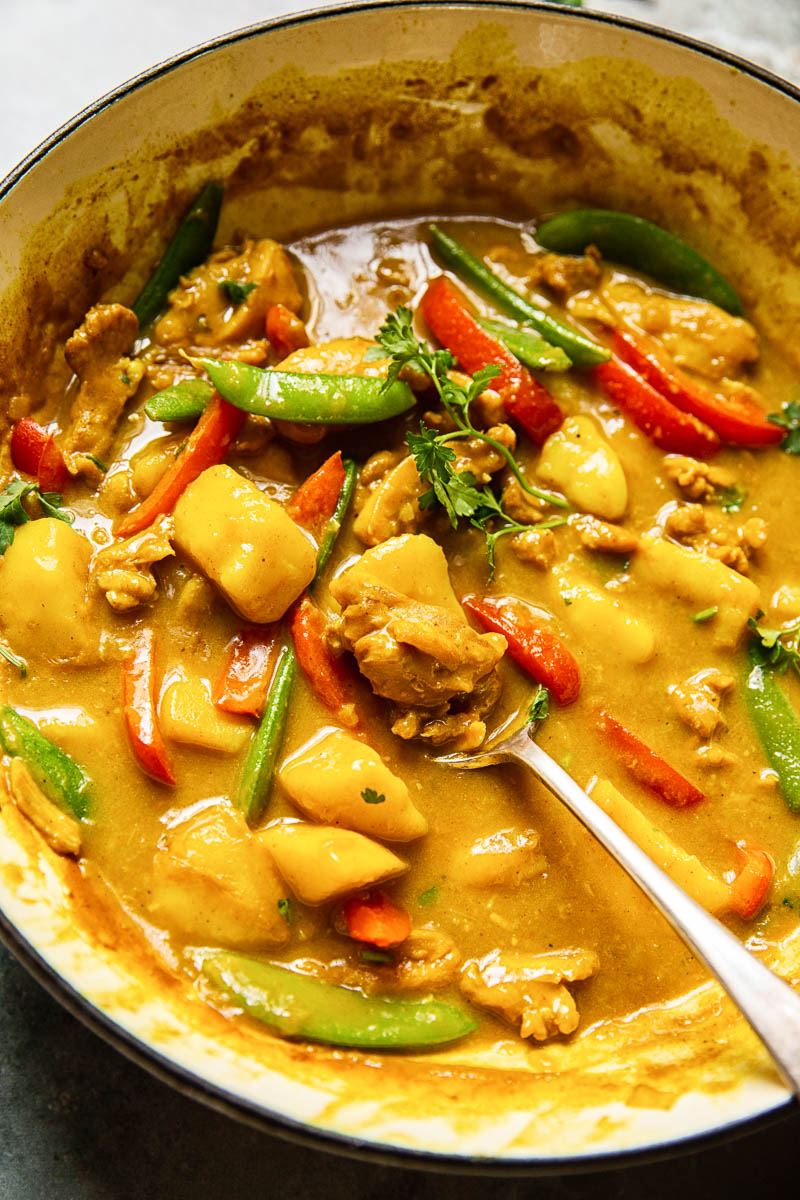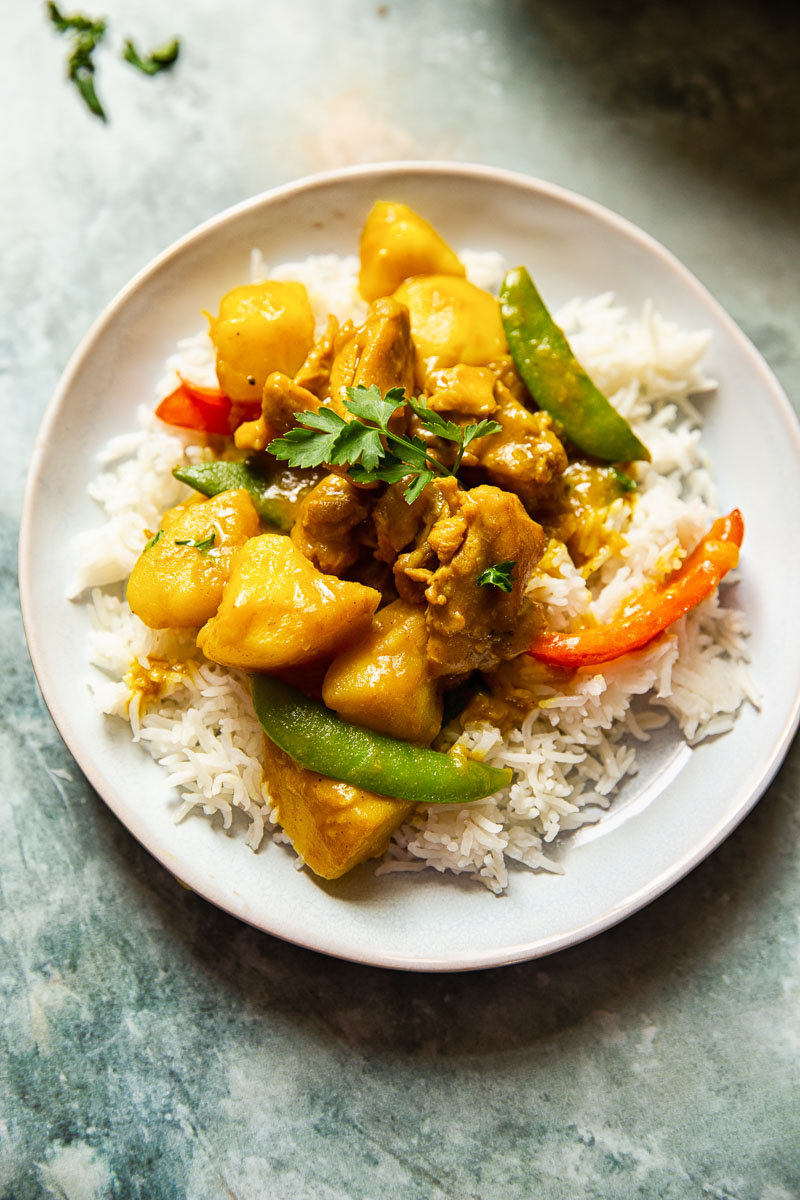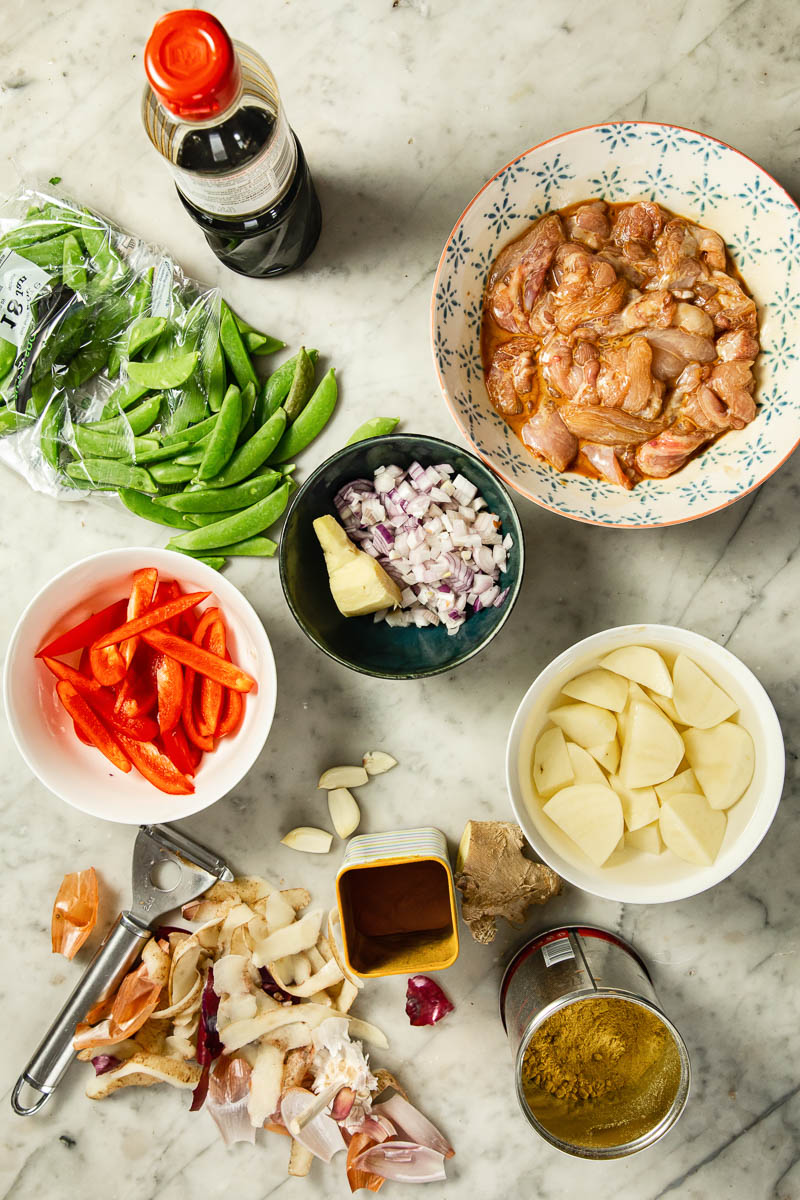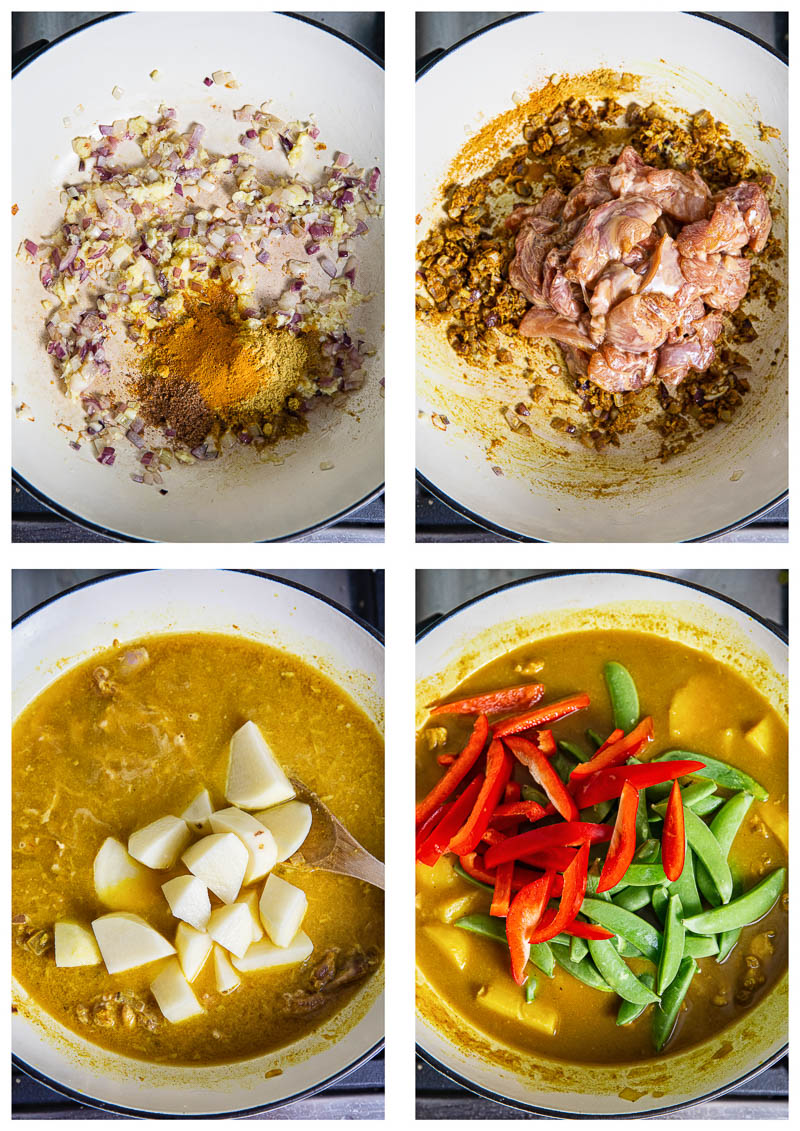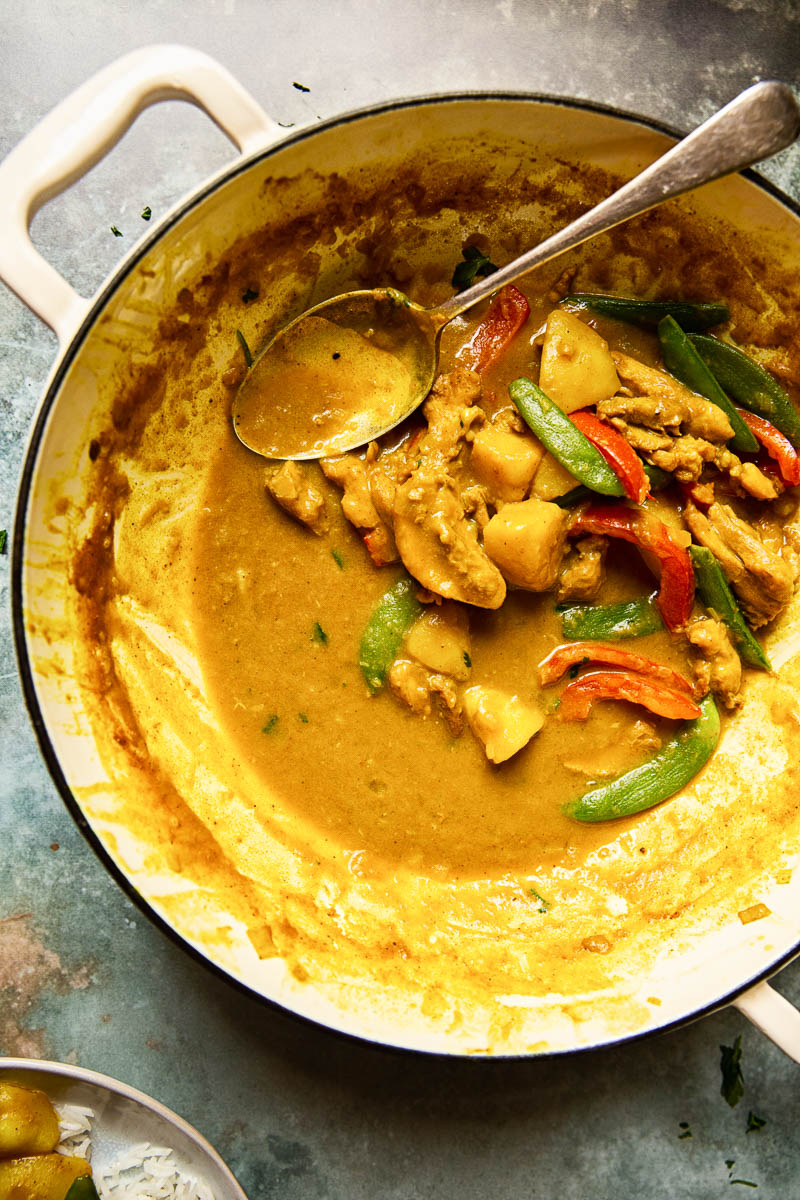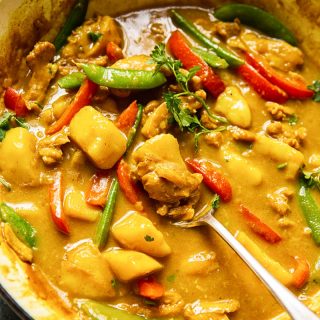For more healthy and delicious Chinese recipes check out Speedy Sesame Shrimp Stir Fry. No matter how much one loves cooking, at some point of the week we all find ourselves tired and in need of some comfort food. That often mean takeout or takeaway as it is known here in Britain. I know I want to order in at least once a week. It’s easy and it makes us feel like we are treating ourselves. Both great things. What is less than great is the hefty price the takeout meals come with and the overall calorie count. For someone who tries to introduce balance in their life, those two things are hard to swallow. Pun intended. Here is where my recipe for Chinese Chicken Curry comes in. Whenever we contemplate a takeaway, my kids immediately ask for Chinese over anything else. Not sure why since we hardly ever agree to that. I never ever feel well after I eat Westernised Chinese food. However I loved real Chinese food when visiting China, which was a completely new culinary experience. It was built around fresh and nutritious food, as opposed to dishes that were deep fried and loaded with salt and sugar.
Chinese Chicken Curry vs Indian curry
If you are not an expert on both countries’ cuisines, it might be confusing as we often associate curry with Indian food. Although curry likely originated in India, it’s eaten in many Asian countries, and China is one of them. The term ‘curry’ actually covers a broad swath of dishes. It’s really just a saucy dish flavoured by a mixture of ground spices. The curry spices themselves can vary, although they have some usual suspects such as turmeric and cumin. Chinese curry is often a bit more watery in consistency than Indian curry. This is due to the fact that Indian curries often use tomatoes as natural thickeners while it’s not the case with Chinese curries. Of course, these aren’t the only curries out there, as any lovers of Thai curries will attest! Neither Indian nor Chinese curries use corn starch to thicken the sauce. But it’s important to mention that sauces are expected to be thicker in the West. So I’ve used corn starch in my recipe to thicken my Chinese curry sauce. You can also use xanthan gum to thicken the curry sauce if you’d like to lower the carb count. Another point of difference is the mix of spices. In Chinese curries just a touch of the curry powder and turmeric is used along with other spices like coriander and star anise with a splash of soy sauce, while the first two are the anchor flavours in Indian curries.
Chicken breasts or chicken thighs?
I’ve used skinless, boneless chicken thighs in this recipe as they are cheaper and more flavourful in my opinion. However, I know it’s a matter of taste, so you can use either skinless, boneless chicken breasts or skinless, boneless chicken thighs with visible fat removed with very similar results. You can also use fish or shrimp for an equally authentic Chinese curry.
What vegetables to use
Traditionally green peppers and potatoes are used as well as a whole array of other vegetables. In the British takeaway version of this curry you will always see green peas. Apart from the usual suspects like onions, garlic and ginger, I’ve decided to use red peppers, sugar snap peas for flavour and potatoes for sustenance. However, one of the great things about a curry is that you can freestyle quite a lot using the ingredients you have on hand. In this curry, you can use anything from carrots to broccoli to suit your own taste and what is available in your fridge.
Serving suggestions
Chinese curry is absolutely delicious served over plain steamed rice but if you prefer noodles, who am I to stop you?! Personally, I love to give my rice a bit of flair. It’s such a big part of the meal, so of course it’s worth a bit of attention! My favourite with Chinese chicken curry is aromatic coconut rice, easy to make in an Instant Pot or rice cooker.
Storage and leftovers
This curry can be frozen and it reheats beautifully. It’s very easy to double the recipe and freeze half of it for the nights when you truly need a takeout because you just can’t imagine cooking! It can be warmed up in a microwave or on a stovetop over medium-high heat. Add a splash of water if it seems to be a bit too thick.
More curry recipes to try
Butter Chicken Curry Thai Red Curry with Shrimp and Snow Peas Chickpea and Butternut Squash Curry Chicken Katsu Curry
